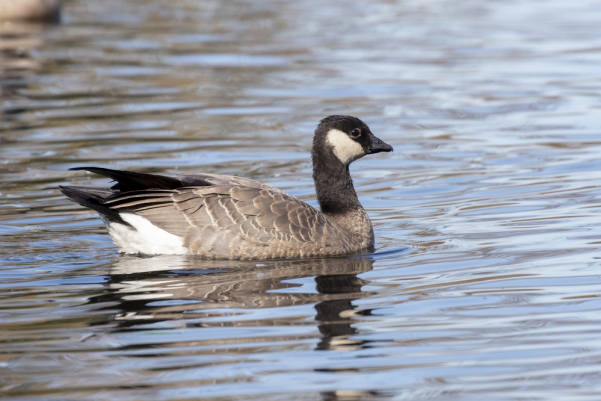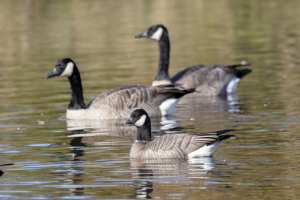
If you’ve lived in or traveled around the United States, it’s very likely that you’ve seen or heard a…Canada Goose…or at least you think you have. Some of those birds you remember might not be Canada Geese at all, but the very similar but slightly smaller cackling goose. So, what’s so special about this Canada Goose look-alike? Surprisingly, a lot! Here is everything you need to know about Branta hutchinsii, or The Cackling Goose.

The Cackling Goose is a short, compact bird with a short neck, small bill, and steep forehead. You’ll notice that most have a black head and neck with a large white patch on the cheek that forms a sort of chinstrap around the throat. Some even have a matching white collar at the base of their neck. Females are almost identical to their male counterparts, but are slightly lighter and tend to have a different sounding call. Cackling Geese can be hard to tell apart from smaller Canada Geese, and at one point people assumed that both types of bird belonged to the same species. It doesn’t help that Cackling Geese can be found in other flocks of geese, including Canada Geese. You can tell the two species apart by their calls, Cackling Geese calls are higher in pitch, their shorter stature, and their more rounded heads.
Cackling Geese usually stick together in their families or flocks when feeding on grasses and other vegetation in open environments. They nest individually or in colonies, preferring the arctic tundra, typically on islands in lakes and marshes, for their homes. Nests can usually be found in elevated areas near the water, with eggs laid in a shallow depression that has been lined with down and plant material. One subspecies however, the “Richardson’s” subspecies, can nest in colonies of several hundred pairs on steep rock slopes and cliffs much higher up. Cackling Geese typically breed in remote northern Canada and Alaska, but they can often also be found in the Pacific Northwest, California’s Central Valley, the Texas/Louisiana coast, and the southern Great Plains.
Like most geese, the Cackling Goose is naturally migratory and will winter in a large part of the the United States as well as western Canada and northern Mexico. While on the move, they forage for their food in agricultural fields, where they feed on leftover cultivated grains, and roost at night with other geese on lakes, wetlands, and reservoirs, where they feed on molluscs, insects, and crustaceans.
Though over-hunting and loss of habitat wreaked havoc on the Cackling Goose population in the early 20th century, much has been done to preserve these incredible birds. Game laws have been improved, habitats restored, and preservation programs have been put into place, allowing Cackling Goose populations to recover in most of their range. So, keep an eye out next time you spot a flock of geese flying overhead or swimming by in the local lake, and you might be able to see a Cackling Goose for yourself!
